
While there are mixed feelings about whether to raise monarch butterflies indoors or not, there is no disputing that these gorgeous creatures have indeed been threatened with extinction. Over the last 20 years, monarch populations have fallen by more than 80 percent. Factors contributing to their alarming decrease in numbers have been due to landscape-scale threats from toxic pesticides, deforestation, and global climate change. There are steps you can take to help these butterflies and I will discuss them below.
In this post, I will share some information about these fascinating butterflies as well as my first experience with a chrysalis.
I was recently gifted a monarch butterfly chrysalis that was housed in a mason jar. The chrysalis is the pupa stage of the monarch butterfly’s life cycle. This was a new and exciting endeavor for me and something that I have always been interested in getting into. This past spring, I started growing milkweed from seed. It will take a few years before I see my plants reach full maturity. Monarchs use and benefit from a variety of milkweeds. Many butterfly species have a single plant required as a food source for their larval form called a host plant. Milkweed is the host plant for the monarch butterfly. Without this plant, the larva would not be able to develop into butterflies. Although I will have to wait a few years before I can take care of monarchs with my milkweed plants, I had the opportunity to take care of this particular chrysalis.
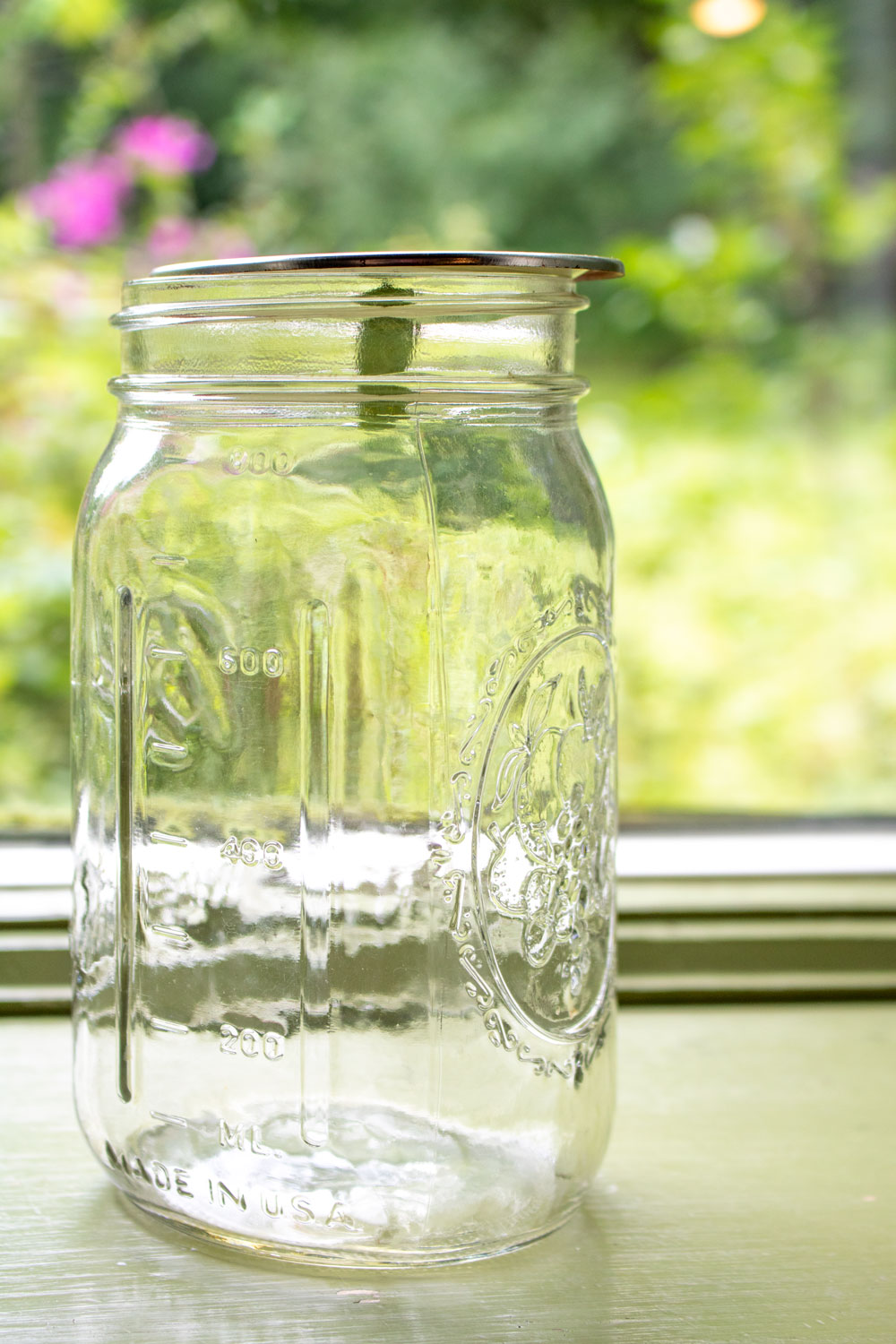
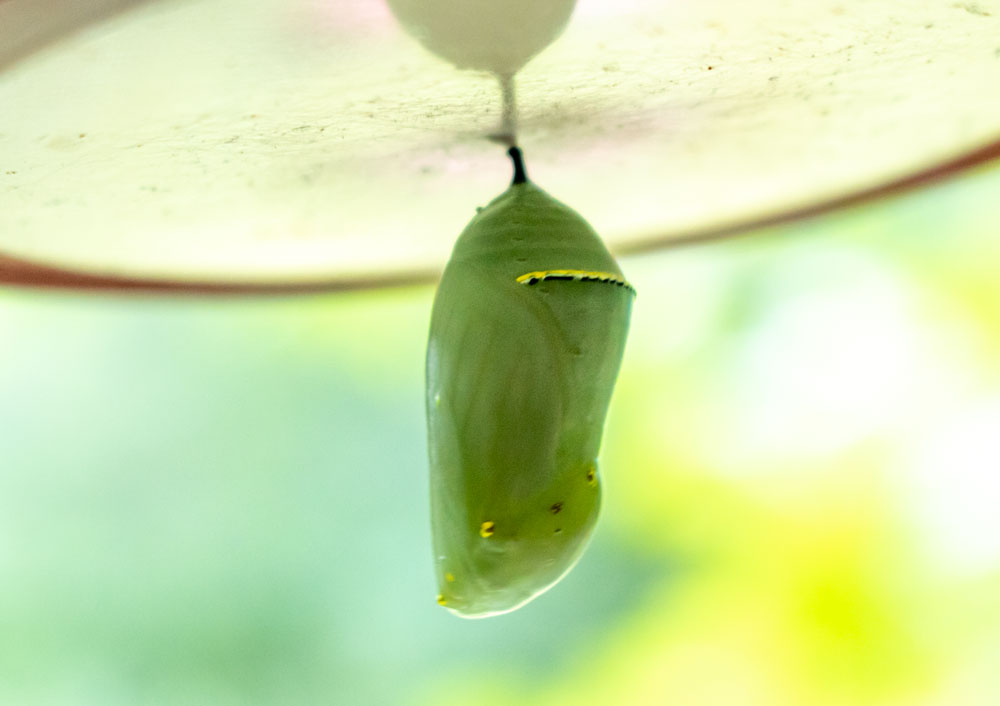
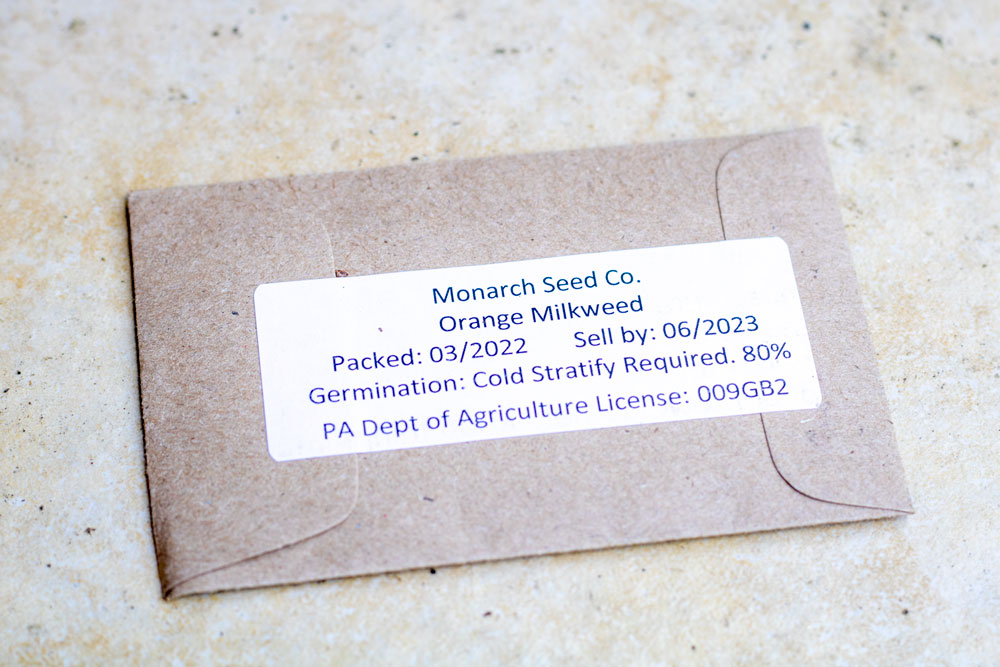
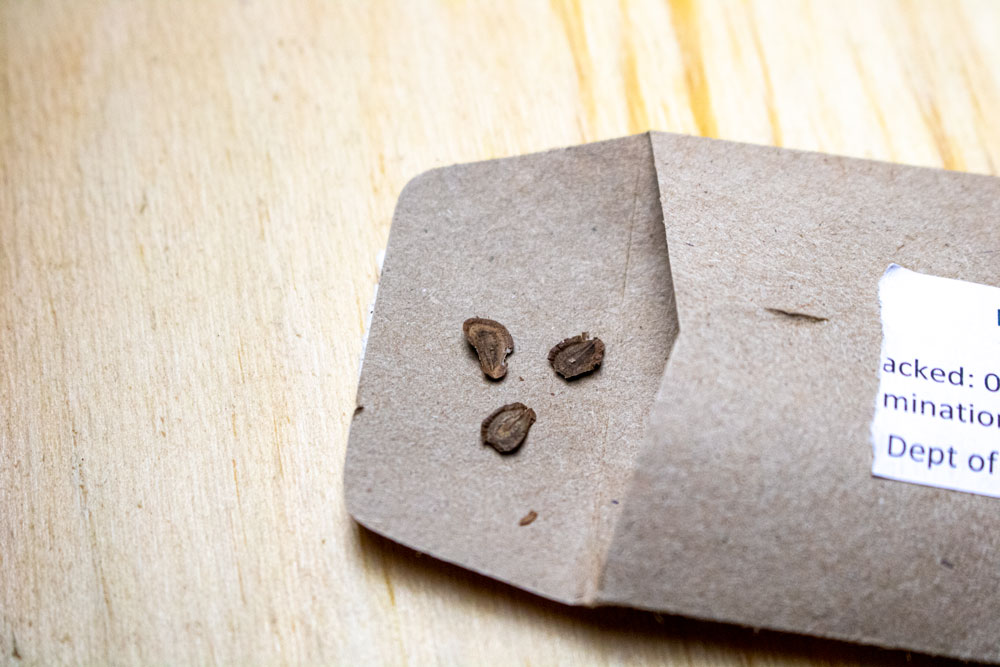
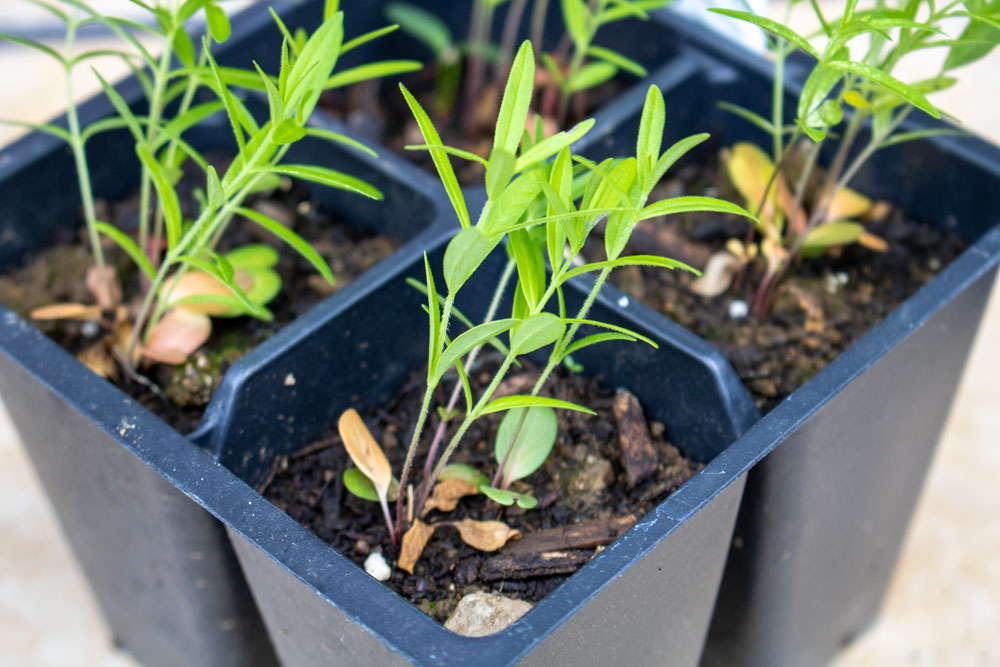
Growth Stages of the Monarch Butterfly
Monarch butterflies Danaus plexippus have four life stages: egg, larva (caterpillar), pupa (chrysalis), and butterfly. Every part of the growth timeline of a monarch butterfly is a sensitive time while in their chrysalis. Before they ever enter this stage, the caterpillar has to spin their silk mat, giving them a place to hang from. Once they have shed their skin, they can then start to form the chrysalis.
The Pupa (Chrysalis)
A chrysalis goes through several changes during the brief time that a monarch butterfly is inside. Initially, the pupa is bright green, slowly covering up the rings of green, yellow, and black of the caterpillar’s body. The crown is called a diadem. If you look closely, it’s a raised structure, a line of tiny hills. The combination of the raised hills and carotenoids present both absorb and reflect the light, creating the appearance of shiny gold.
The adult will emerge in 10-14 days. A chrysalis will become darker and then look transparent a couple of days before the monarch butterfly is ready to hatch. Before the butterfly emerges, you’re able to see the orange, black, and white colors on its wings through the pupa covering.
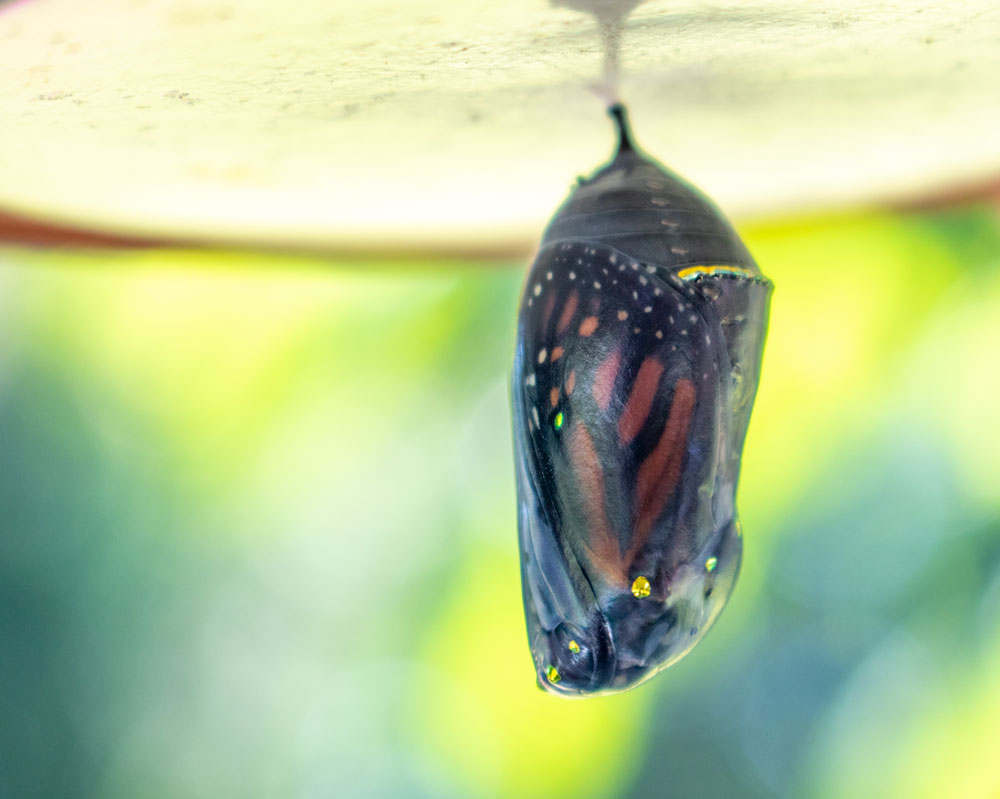
As a general rule, it shouldn’t be black for more than three days, it’s likely the monarch inside has a bacteria or disease, or a predator has laid its eggs inside. If the chrysalis has been very dark for at least five days, and you cannot see the orange wings through the transparent casing, the monarch butterfly inside is most likely dead, and it will then dry up. Dispose of your bad chrysalis to avoid disease spreading.
Signs of Emergence
While it may take up to 14 days for the butterfly to finally emerge, one of the final stages is easy to identify. The chrysalis starts to become transparent, and you’ll be able to see the butterfly through the surface. The transparency is an indication that you’re less than 24 hours from seeing this beautiful insect emerge.
The pleats of the chrysalis will start to expand to make room for the butterfly to come out. The separation takes time, so you might be waiting up to an hour to emerge. When the butterfly finally emerges, the wings will take several hours before they are ready to fly.
The Adult Butterfly
Adults usually emerge in mid-morning. At this point, if you are hand-rearing monarchs this is when you will want to check back often to increase your chances of observing this incredible event. Allow the newly emerged adult plenty of time to inflate its wings and for the wings to dry before handling. This can be about three to four hours. A monarch’s first short flight soon after emergence allows them to reach a dark and protected spot where they rest the remainder of the day unless disturbed. It is also important to remember to release your Monarch on a warm sunny day, without wind or rain, and near flowers if possible. If it is colder than 60 degrees Fahrenheit, it will often be unable to fly.
The Big Day!
About a week after I had received my chrysalis, I was witness to several changes. It became much darker and by mid-morning, it had changed so much that it indeed became transparent and the monarch’s colors were showing through. Within a short time, I was watching the emergence of a monarch.

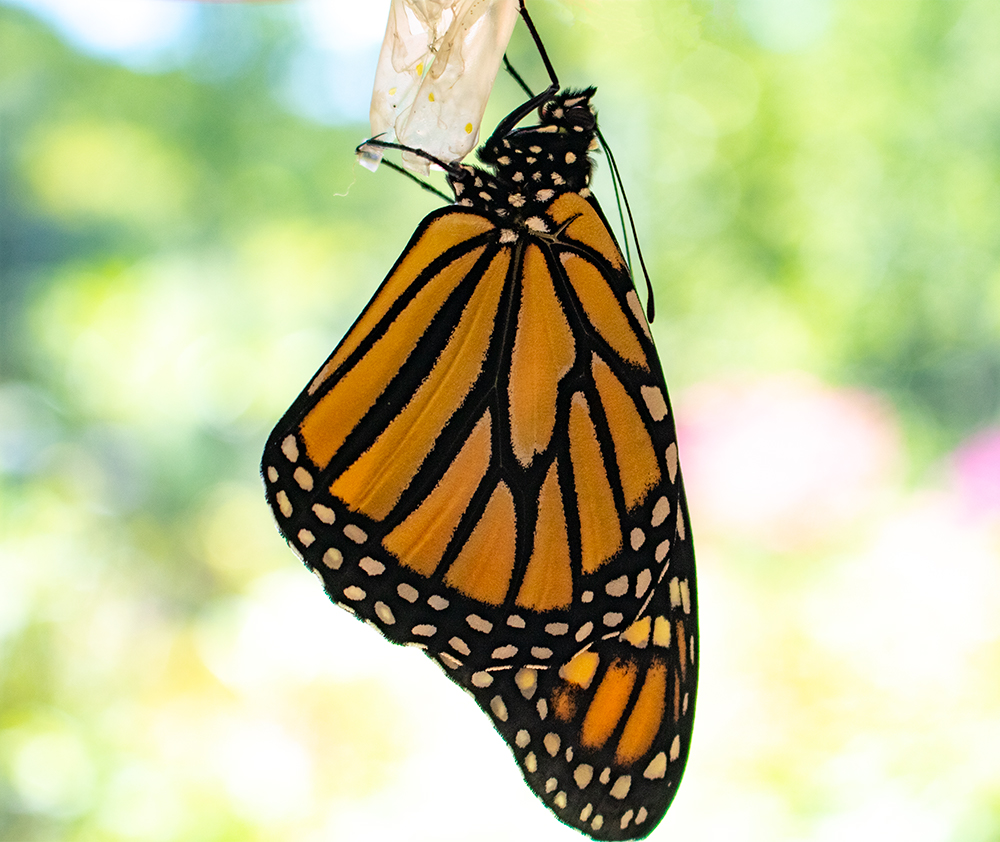

By the early afternoon, I was viewing a fully emerged monarch butterfly. I waited about four hours and she was ready to leave the mason jar. With about three good hours of daylight left, I felt it was okay to release her outside. This monarch wanted out of the jar at this point. She was strong and ready to eat! I carefully removed the lid from the jar and she climbed onto my hand. I then brought her to a butterfly bush Buddleja that she could drink from in one of the flower gardens. Within a few minutes, she flew up toward the house and perched on the side in a shady area. After that, she then flew away over the roof. I have to tell you this was a little bittersweet. I was glad to see her fly successfully but now I was left to wonder how she would thrive out in the world. Well, a few days later, I had the opportunity to see her again not too far from where I had let her go. She was feeding from a coneflower and I like to think she was saying thank you for my part of her process.
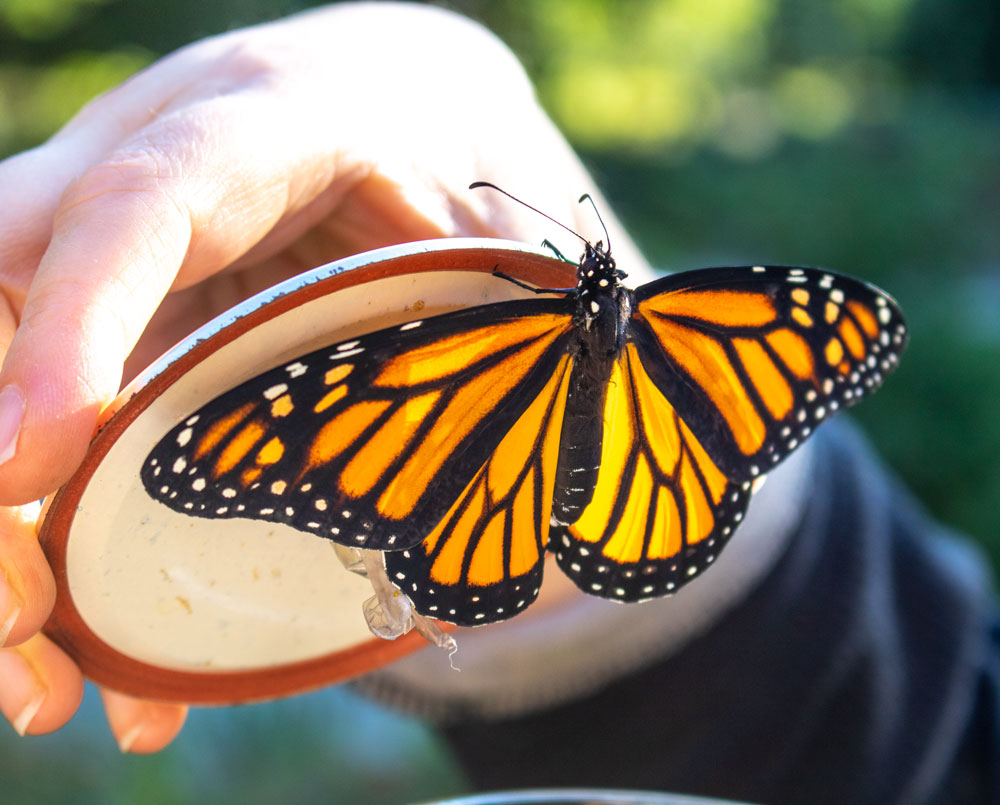
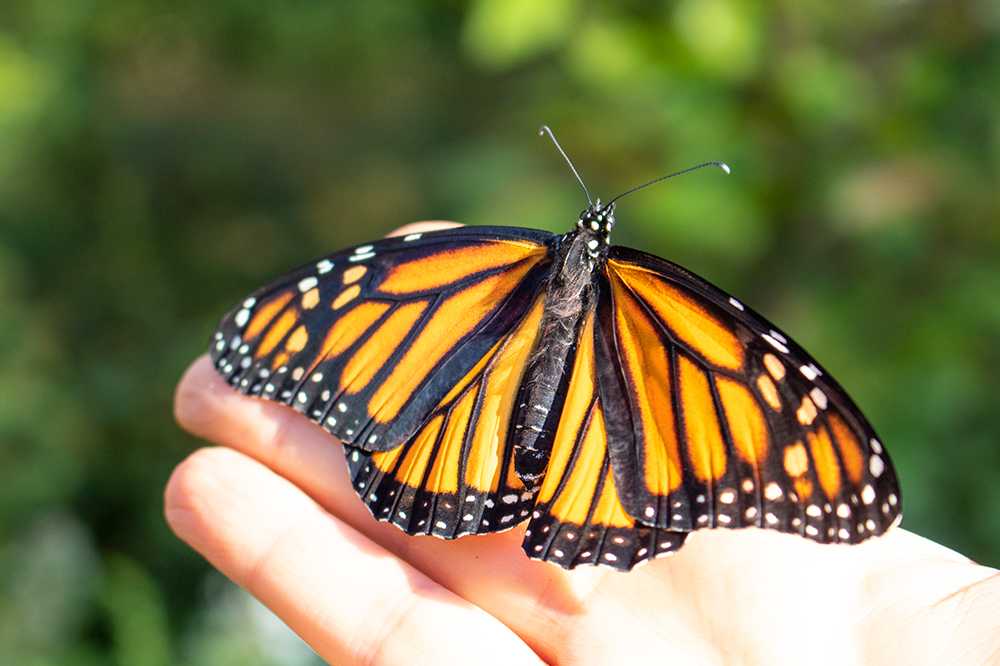
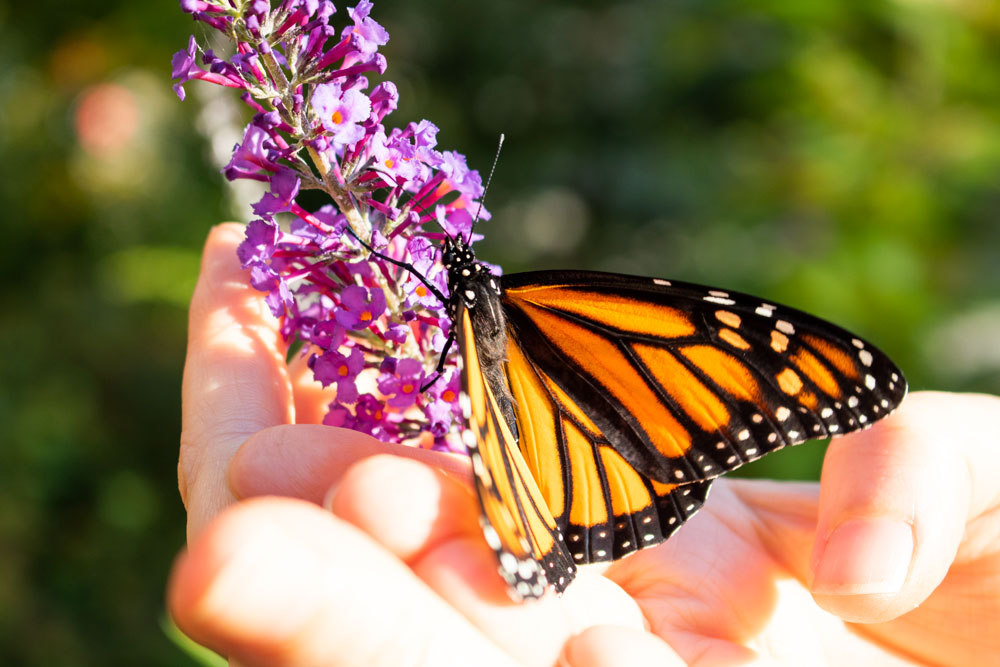
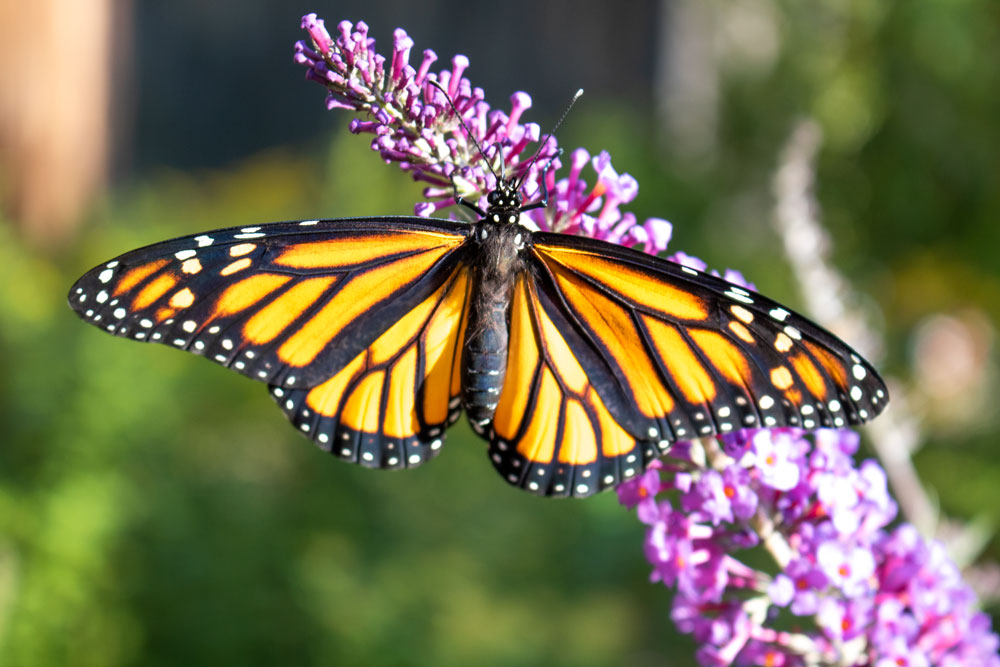
By the way, you may have noticed that I have been referring to my monarch as she. I will explain below how I could tell her sex.
How to Tell if a Monarch Butterfly is a Male or Female

Is my newly emerged monarch a male or a female? It is simpler to differentiate between the two than you may think. As I don’t have photographs of both a male and female, I will have to explain the difference with words. The male monarch butterfly has a black spot on each hind wing that is made up of specialized scales. In other butterfly species, similar spots emit pheromones to attract females, but scientists are not sure what function these spots serve for monarch males. These black dots are an excellent marker for sexing purposes. The monarch female has noticeably thicker wing veins, which give her a darker appearance. Being that these spots were lacking on my monarch, I believe she is a female.
What is the Average Lifespan of a Monarch Butterfly?
Each adult butterfly lives for two to six weeks, except for the migrating generations. Successful migrating monarchs will live between six to nine months and reproduce and die in the southern U.S. in the spring. The final generation of monarchs in a year, usually born toward the end of summer and the beginning of fall, has an important task. They will fly south for the winter, much as birds do. Then, they will overwinter and hibernate in the southern US and Mexico. Their offspring then carry on their migration north. In February or March, the monarch emerges from hibernation and finds a mate. It then migrates north and east and finds a milkweed plant on which to lay its eggs – usually around March or April.
For this reason, individual monarchs do not make it back to their original starting place. Flying up to 2,500 miles from the US and Canada where they breed, all the way down to the forests in central Mexico where they hibernate, the monarch’s migratory pattern is the most highly evolved of any known species of their kind.
How Can I Help Monarchs?
As pollinators, the monarch butterfly’s migration across the continent provides a beneficial service, essential for helping many ecosystems thrive. Here are a few ways that you can help them survive. Planting milkweed is crucial to monarch survival. It’s their only host plant, allowing adults a habitat to lay their eggs and larvae to successfully develop into maturity. This includes milkweed species such as Common milkweed Asclepias syriaca, Butterfly milkweed Asclepias tuberosa, and Swamp milkweed Asclepias incarnata.
It’s not all about the milkweed though. Monarchs need a variety of nectar plants, specifically fall-blooming plants, to fuel the first leg of their migration. Late summer and early fall is a peak time for monarch activity as they prepare for their long migration south to the forests of central Mexico. It’s also a great time to provide them with late-blooming flowers like goldenrod Asteraceae, coneflower Echinacea, Black-eyed Susan Rudbeckia hirta, and aster Asteraceae to fuel their long journey.
In a perfect world, it would be wonderful if we could avoid pesticides altogether. If that’s not possible, it can help to limit their use in your gardens or consider safer options for the environment. How have pesticides affected monarchs? They have contributed to the decimation of milkweed and you now know how beneficial these plants are to these insects.
Habitat preservation is also a key factor in the global monarch butterfly crisis. These habitats are important not only for monarchs but for other pollinators as well. If you are unable to plant your own blooms, you can research other avenues to help monarchs. You can do your part by finding reputable organizations that fight to protect habitats, which can also make a difference. There surely is no shortage of advocacy groups fighting to protect the natural world. You can find one that best aligns with your point of view on this subject.
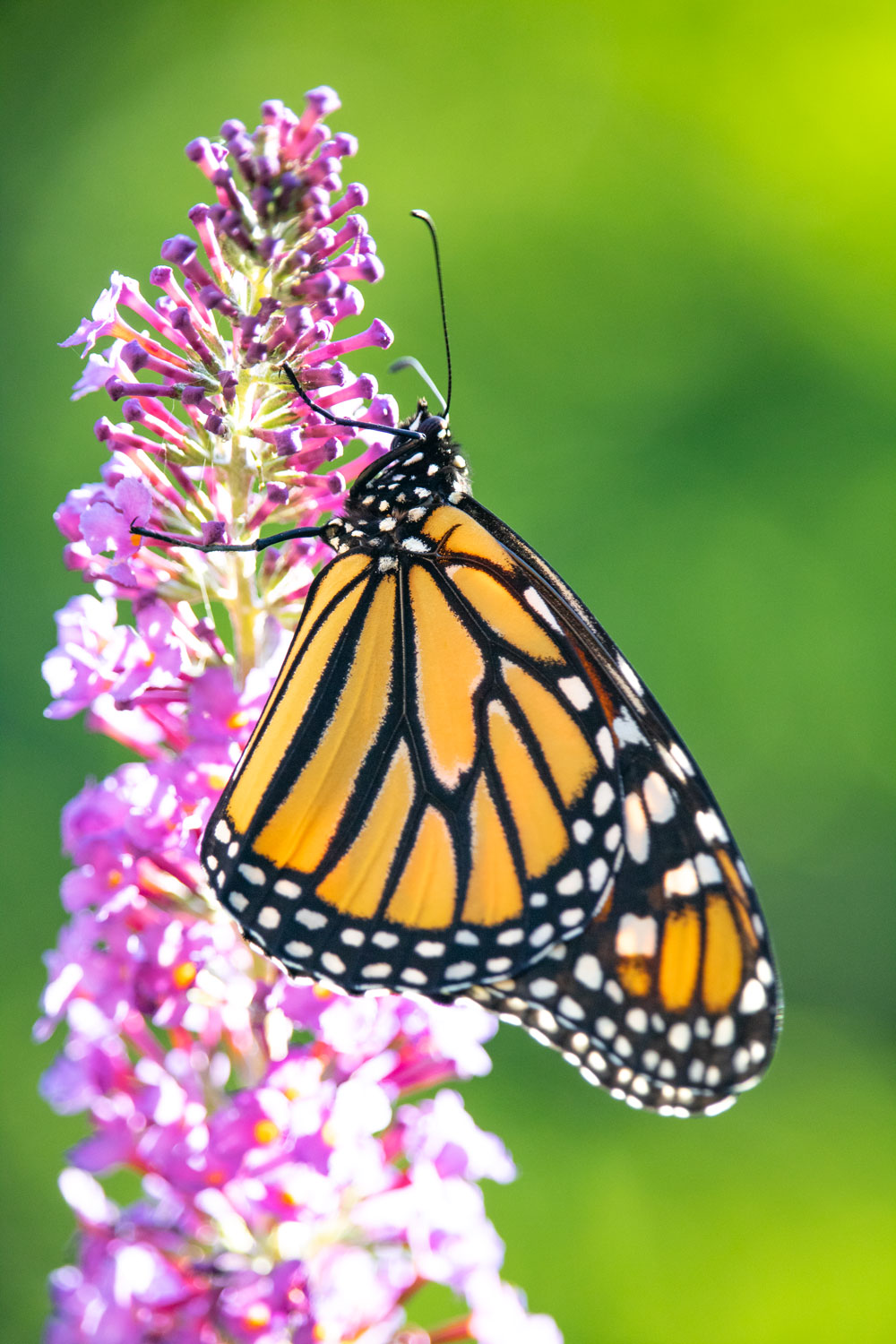
I can’t wait for my milkweed to start blooming so I can have more encounters with these beautiful creatures. If you have any stories from your own experience with monarchs and would like to share them, I would love to hear from you. Thank you for reading.
Leave a Reply